Hello. This is Shiba from the design department.
In this column, I would like to introduce the appeal of psychedelic poster design that emerged from the American counterculture of the 1960s, which has been an area of influence that I have come across to date, particularly in terms of its historical background, design sense, and the culture surrounding it, and which continues to influence me today.
First things first
The appeal of psychedelic poster design lies not only in the eccentric and original feel of the designs themselves, but also in the fact that between the 1940s and 1960s, there were young people who wanted to break away from everything and run around in search of new values, resulting in the creation of a stimulating culture that will remain for generations to come.
The image of America in the 1960s that comes to mind for many people is of the Woodstock Festival , musicians like The Rolling Stones , and the hippie culture that surrounded them.
If you're more interested in American culture and fashion, some of the top ideas might include the Beat Generation , which was made up of beatniks, the movie Easy Rider , and the Monterey Pop Festival , which marked the beginning of the Summer of Love .
These were events, movements, and artworks with themes of freedom and peace, such as free speech, love and peace, civil rights, and opposition to war, which symbolized the historical context of America at the time.
Woodstock Festival '69
A teenager who was interested in American culture and was engrossed in music and fashion
By the time I was 14 or 15 years old, I was already heavily influenced by American music and fashion.
At that time, every fashion magazine was adorned with pictures of cool, high-tech sneakers.
Additionally, it featured cool vintage Levi's jeans, American workwear, college wear, outdoor gear, and skater fashion; it seemed like a really fascinating and inspiring world, and I was immediately influenced by it.

This is the successor to the legendary Air Max 95, which sparked the high-tech sneaker boom and was so popular when it was released that it was sometimes sold for more than 10 times its retail price.
Photo by Daniel Go Taken on January 20, 2013
At the same time, on the music front, I also became fascinated with the coolness of the music of grunge rock bands and punk mix bands active mainly in the United States, such as the Beastie Boys , Nirvana, and Rage Against the Machine .
While I was immersed in this kind of popular music and fashion, I also dug deeper into the older music that influenced it, and became increasingly interested in related music. I also developed an eye for determining the era and purpose of clothing from the small details.
"NIRVANA" is an indispensable band when talking about 1990s grunge rock. The video is of their signature song "Lithium." The unique, relaxed style and fashion of guitarist and vocalist Kurt Cobain had a huge influence on many young people.
What I learned through music
Through music and clothing, I learned about world events and cultures from the 1950s onwards.
This includes the poster design introduced here.
For example, there is the punk movement that was born out of poverty and class issues in the UK in the late 1970s, and reggae music that was born in Jamaica, a country that was poor but had developed its own unique religious views.
Through experiencing this unique music, I learned that music from the past contains many expressions and messages of love and anger from the times.
Modern music culture is always connected to the light and darkness of each era.
The historical backdrop in which the culture surrounding music and art developed was a time of complex issues such as race, politics, war, domination, drugs, and poverty. It evolved from young people's antithesis to these issues and has changed with the times to this day.
Through this, I have come to realize that music is an important part of culture that cannot be separated from the times, and I have learned a lot about it as a value and identity that goes beyond the realm of hobby or entertainment.
About involvement with music events and flyer design
When I was in my mid-twenties, a friend from my school days told me about holding a music festival.
I became interested in the project and ended up getting involved from the production and preparation stages.
A small music festival has started, incorporating live performances by musicians, sales of handcrafted goods and clothing, organic and international restaurants, and live painting by artists.
The number of visitors was small, ranging from 100 to 500 people, but the enjoyment of creating an event from start to finish with just a few members was exceptional.
On the other hand, it was very difficult and there were many times when I felt like giving up.
After that, we held the event once or twice a year for about seven years, and I think designing the event flyers and posters, as well as tickets, banners, POP displays, etc., was what inspired me to pursue a career as a designer later on.
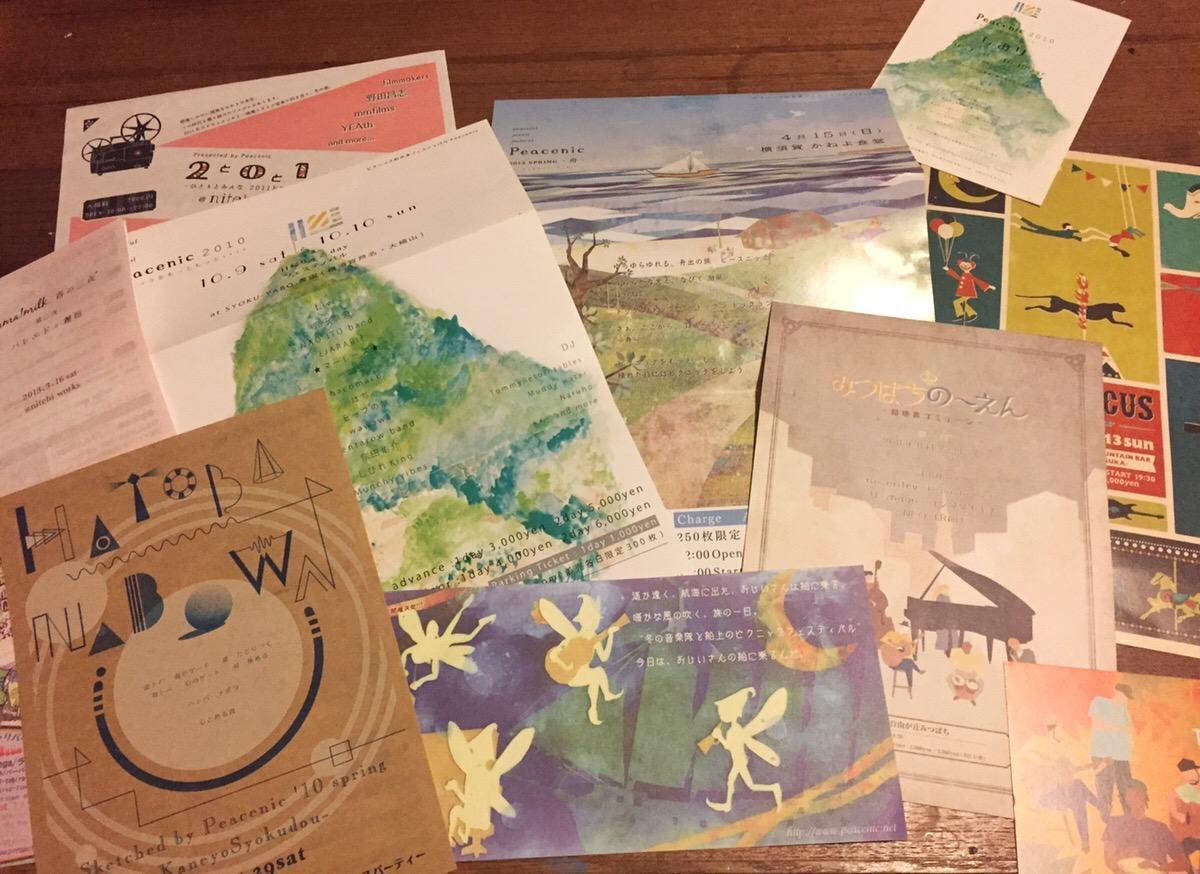
Some of the flyers for music festivals and other events we hosted
In this way, you will meet many musicians and music lovers and discover the deeper and more enjoyable world of music.
Gradually, I was no longer just organising the festivals, but was also designing advertisements for other festivals, being in charge of decorating the venues and stages, and supporting the operations; my daily life became indispensable without music.
In particular, there was a movement known as the festival boom, and I began to interact more and more with people who shared the same atmosphere and values as me, including musicians, fashion, food and drink, crafts, art, and design.
I've loved making things and drawing since I was a child.
I think it was normal for my mother to sew book bags and recorder cases for me in elementary school, but there were also times when I sewed them myself.
This was not because my mother was bad at sewing, but because I took the initiative.
Furthermore, the notebooks and textbooks were in the same condition as graffiti books.
Perhaps it was this temperament combined with my exposure to American music and fashion from the 1960s and early 1970s, and meeting friends who shared that same interest, which led me to become more and more interested in that image.
I feel that the world I encountered there is an extension of the counter-culture world known as "psychedelic culture" and the "flower movement."
The 1950s: The birth of Pop Art
From here on, I'll leave me aside for the moment and talk about the changing times and how psychedelic poster design came about.
First, let's talk about " Pop Art ," which was the foundation of psychedelic poster art. Pop Art is a movement that originated in London, England in the early 1950s, and then branched out and became a boom in New York at the end of the 1950s.
This is where famous artists such as Andy Warhol and Roy Lichtenstein, some of whom you may already know, came from.
Until then, art from that period was dominated by Abstract Expressionism, and was the work of a select few artists who were difficult for the general public to understand.
Pop art artists combined everyday items with images of mass production and mass consumption, transforming them into something easy to understand and familiar that any ordinary person could have.
It is thanks to these changes in the times that art can be so readily enjoyed today.
These are clearly expressed in the works of Warhol, who mass-produced portraits of the well-known Marilyn Monroe and Campbell 's Soup cans found in ordinary households using silkscreen printing, and Lichtenstein, who became famous for enlarging frames of popular comics and even including dots in his representations.
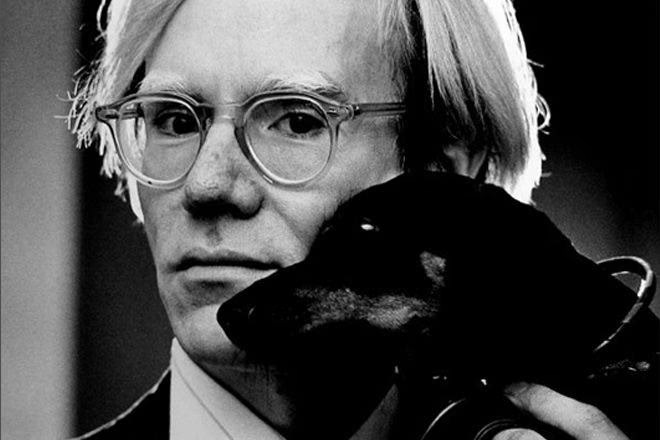
Andy Warhol
Photo by Jack_Mitchell (2011) / CC BY-SA 4.0-3.0-2.5-2.0-1.0

Andy Warhol's masterpiece: Portrait of Marilyn Monroe (left)/Campbell's Soup Cans (right)
Left Photo by Maurizio Pesce (2013) / CC BY 2.0
Right Photo by Ian Burt (2006)/CC BY 2.0

Roy Lichtenstein
Photo by Eric Koch (2014) / CC BY-SA 3.0
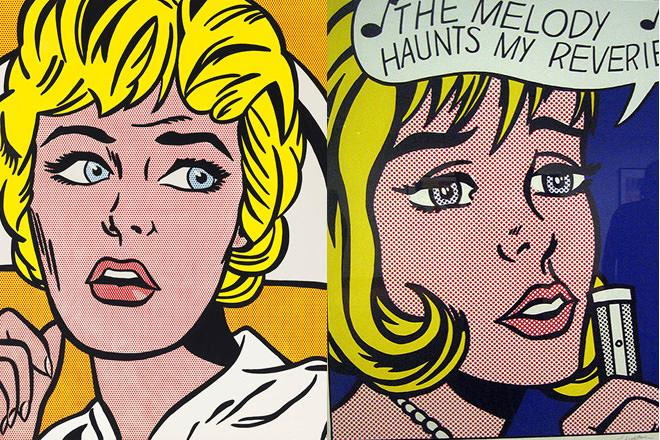
Roy Lichtenstein's Masterpiece
Right Photo by Ajay Tallam (2008) / CC BY-SA 2.0
The beginning of the 1960s, the hippie movement, and the influence of the Grateful Dead
In the 1950s, New York's booming post-war economy transformed parts of America into incredibly wealthy and glamorous places.
However, behind the scenes, there were issues such as the Vietnam War, racial discrimination, and the civil rights movement, and I think society was divided.
In this historical context, art and literature, seeking freedom, spread westward from New York, eventually reaching San Francisco. The biggest factor in this was that young people living in the underground of New York, influenced by the works of the Beatniks, the driving forces behind Beat literature, including writers and poets such as Allen Ginsberg , Jack Kerouac , Gary Schneider , William S. Burroughs , and Neal Cassady , discovered new values and traveled westward in search of greater freedom, eventually settling in the Haight-Ashbury district of San Francisco , which would later become known as the hippie mecca.

Important Beatniks: Allen Ginsberg (left), Neal Cassady (center) and Jack Kerouac (right)
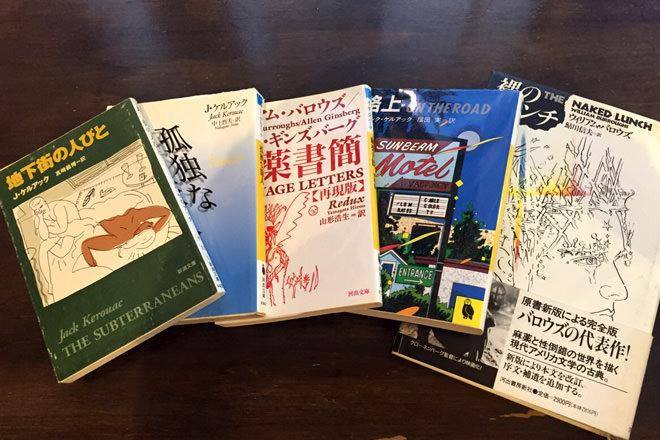
Books by Beatnik Writers (Japanese version)
From the left: Underground People by J. Kerouac (Shincho Bunko) / The Lonely Traveler by J. Kerouac (Kawade Bunko) / The Narcotics Letters Reprint by A. Ginsberg and W. Burroughs (Kawade Bunko) / On the Road by J. Kerouac (Kawade Bunko) / Naked Lunch by W. Burroughs (Kawade Shobo Shinsha)
The next important event was the formation of the legendary American psychedelic rock band, the Grateful Dead , in California in 1965.
The Grateful Dead was a rock band consisting of 5 to 7 members led by Jerry Garcia. Based on country, folk, bluegrass, blues, reggae, rock and roll, and improvised jazz, the band laid the foundations for psychedelic music and space rock, whose music was inspired by the use of the hallucinogenic drug LSD, which was not yet illegal at the time.
"Sunshine Daydream" is a live video that captures the Grateful Dead's live performance and the audience's reactions.
Their live performance motto was to put the fans first, and they improvised all the songs without deciding on a set order.
During their tours across the United States, their enthusiastic fans, known as Deadheads, traveled together in colorfully painted old buses and Volkswagen vans.
They are a band that has gained a following through their grassroots approach, truly symbolizing freedom and peace.
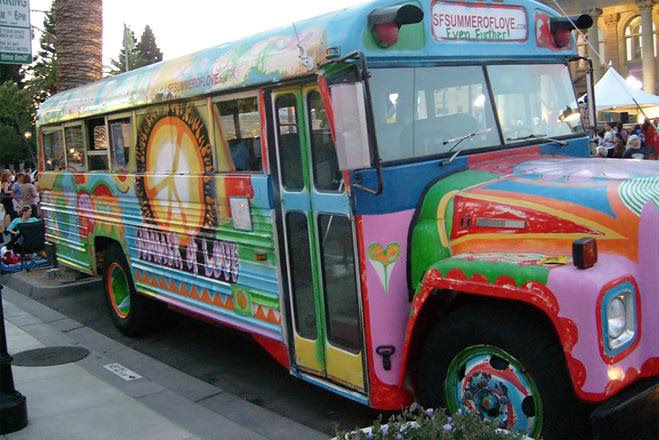
An image of the colorfully painted hippie bus, commonly known as the "Magic Bus"
Photo by Jill Clardy

The Grateful Dead (circa 1970)
Although they are not a very well-known band in Japan, they are a famous band that is known by almost everyone in their home country of the United States.
Apple founder Steve Jobs , the 42nd President of the United States Bill Clinton , and pop artist Keith Haring are also famous Deadheads.
After Woodstock, the music business changed into one that was all about commercialism, and the band instead pursued continuing to perform live shows that both they and their fans could enjoy.Although their record sales did not reach the top of the American sales charts until 1987, their live show box office revenues were always ranked at the top, showing that they were the antithesis of commercialism.
From the time of their formation, the band's members began to focus their activities in the Haight-Ashbury district, a mecca for hippies, and the flower movement and hippie culture began to mature in San Francisco.
Video showing hippies, the situation at the time, and musicians
The birth of psychedelic poster culture
The Grateful Dead asked a promoter named Bill Graham , who ran the Fillmore live house in San Francisco at the time, to promote and manage all of the band's activities.
The band established its own unique style through the introduction of the PA system (sound equipment and the technology to handle it) invented by Graham, and through guerrilla improvisations and other performances. It was an innovative method that was unthinkable at the time, and it had a tremendous influence and was the reason for the explosive growth of their fan base.
Footage of the Grateful Dead performing live in San Francisco's Golden Gate Park in 1967. Even their fashion shows their close connection to hippie culture.
Bill Graham also came up with the idea of producing posters for live music venues and T-shirts to promote live events, and proposed this to the band.
Stanley Mouse , who had been called a master of pop art for his airbrush works, had just ended up in San Francisco around this time, where he met Alton Kelly, a designer who focused on photography, and founded Kelly Mouse Studios. He began producing posters and T-shirts at the request of Graham.
Rick Griffin , who was famous for his illustrations and comics in surf magazines, was also asked to create album covers and posters for the Grateful Dead. These and other artists met in San Francisco and created the psychedelic poster design.
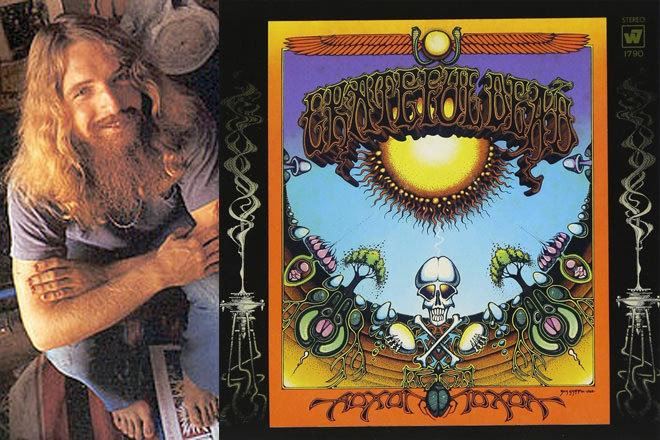
Rick Griffin and the album cover of his masterpiece, "The Grateful Dead AOXOMOXOA (1969)" ( Amazon )
Characterized by psychedelic images and comical illustrations
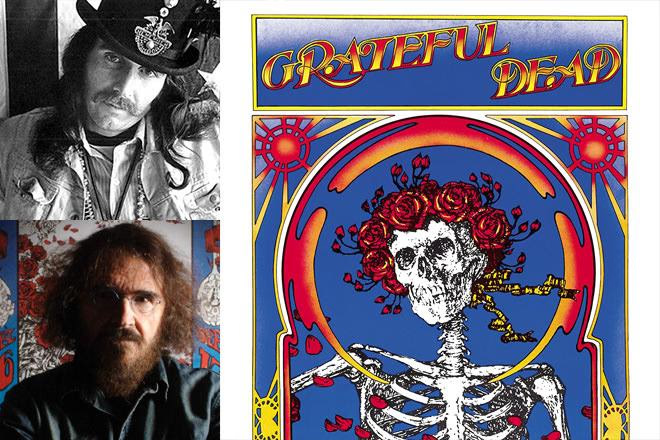
Album cover of "The Grateful Dead Skull & Roses (1971)" by Alton Kelley (above) and Stanley Mouse (below) ( Amazon )
The skull and roses motif became an iconic image of the Grateful Dead.
The dawn of poster culture and band T-shirts that symbolize the era
Many psychedelic poster designs were produced to promote legendary live music venues that were at the heart of rock's golden age, such as the Fillmore, which was run by Graham, and the Avalon Ballroom , also located in San Francisco.
A video that shows psychedelic poster designs in gallery format
Until then, poster designs had been dominated by designs focused on conveying information, but they changed to eccentric, highly artistic designs, colorful and filled with text and illustrations, which seemed to visualize a psychedelic experience.
Most of the posters for live performances by the most representative bands and musicians of the time, including the Grateful Dead, Jefferson Airplane , Janis Joplin , Jimi Hendrix , Santana , Bruce Springsteen , and The Doors , are drawn in this style.
It is said that fans would peel off the posters that were posted on the streets at the time, take them home, and display them in their homes, and today the actual posters are sometimes offered at auction for prices of $2,000 to $3,000 or more.
Furthermore, this art movement gained a status in American art history that has come to be known as the "poster art movement," with works being permanently exhibited at the San Francisco Museum of Modern Art .
As psychedelic poster culture spread, another culture began to emerge.
It's a band T-shirt.
T-shirts with graphics of mice and griffins to promote the Grateful Dead began to become popular among Deadheads as "band T-shirts."
Some of the items were colorfully dyed using a method called tie-dye , and including bootleg items created by Deadheads, it developed into a unique culture that continues to this day.
This was largely due to the passionate fans known as Deadheads.
Although the Beatles and others had printed logos and photographs on T-shirts as novelties for their fans, this was the first time that T-shirts had been sold as a full-scale promotion for a band.
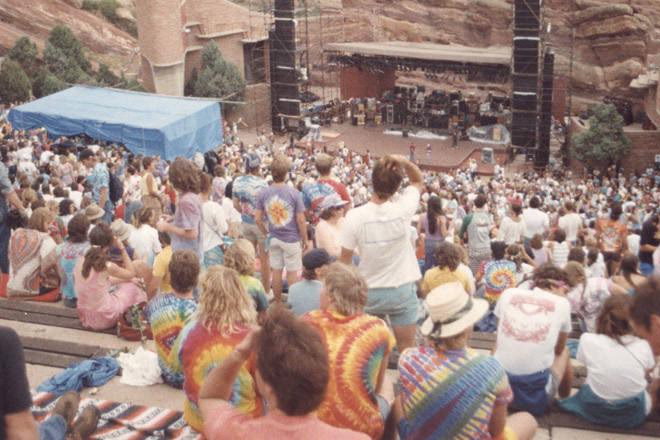
Deadheads in tie-dyed T-shirts waiting for the show to begin, Red Rocks Amphitheatre, Denver, Colorado, circa 1987 (CC BY-SA 3.0)
A slide show of Grateful Dead band T-shirts. The skull and rose motif design was invented by Stanley Mouse, and the skull with a lightning bolt on top was designed by Owsley Stanley and Bob Thomas. Together, they have become symbols of the Grateful Dead and are still popular with many fans today.
I respect the fact that band T-shirts, which are now worn by many people as a matter of course, had such an innovative historical background. I also feel that the values that sought freedom and individuality, which developed against the backdrop of war and racial issues, were very attractive and stimulating, and because it was a good, expansive era, they became a part of the culture that remains to this day.
Diverse ideas and the development of design
I think that the way new art is born from free ideas and thoughts, and new values develop mainly among young people, is the same in any era. Of course, many such things are also emerging in modern times, and I think that when I get a little older, I will be able to observe them objectively.
There is often debate about the difference between art and design.
I won't go into the definitions here, but I think that both have a background of influences and a history that is influenced by the times in which we live.
The same goes for music and other creative endeavors.
That's why I think there is value in accepting everything and giving it your all, rather than denying the experiences you've had up until now or dismissing them as uncool.
lastly
I remain fascinated by the movements and culture that emerged during the period introduced here.
Only a small number of documents and works have been translated into Japanese.
However, even just reading through the surface of it is enough to get you excited.
After the Second World War ended, the world began to move forward in search of a new era.
More than 70 years have passed since then, and today we enjoy such peaceful and prosperous lives.
Problems such as terrorism, war and poverty continue to exist in the world, but here in Japan we have few opportunities to come into direct contact with these things, and there are few other countries in the world that are as peaceful as this one.
I don't consider it a luxury, but it is certainly a blessing.
The dizzying spread of the Internet has accelerated the flow of information to extraordinary levels.
That's great in itself, but it also contributes greatly to the acceleration of mass production and mass consumption.
Booms and movements can last as little as a year.
And then a new boom begins. Along with it, creations also change shape to fit the trends of the time.
I have no intention of denying that it is a bad thing.
One of my favorite musicians is a guitarist named Duane Allman . He once said, "There's no revolution, there's evolution. But I'll always be in Georgia and I'll eat a peach for peace."
I don't know the details of the circumstances that led to those words, but I think that development, more than revolution, is something that should be accepted as essential in any era, and that this is part of what makes design so fascinating.
As long as we live in society, the speed of information transmission is something that individuals cannot control.
That is why I feel that it is such a wonderful and enviable era that a small movement, like that of the 1960s in America, slowly matured over time, becoming a large movement over 20 to 30 years, and remaining in the public's values to this day.
I've been designing posters for several bands, CD album covers, event posters, and T-shirts for the past 10 years.
I will continue to turn to my Mac, books and records, seeking the things I like and the trends of the times, seeking ultimate satisfaction and the enjoyment of the process and results.

